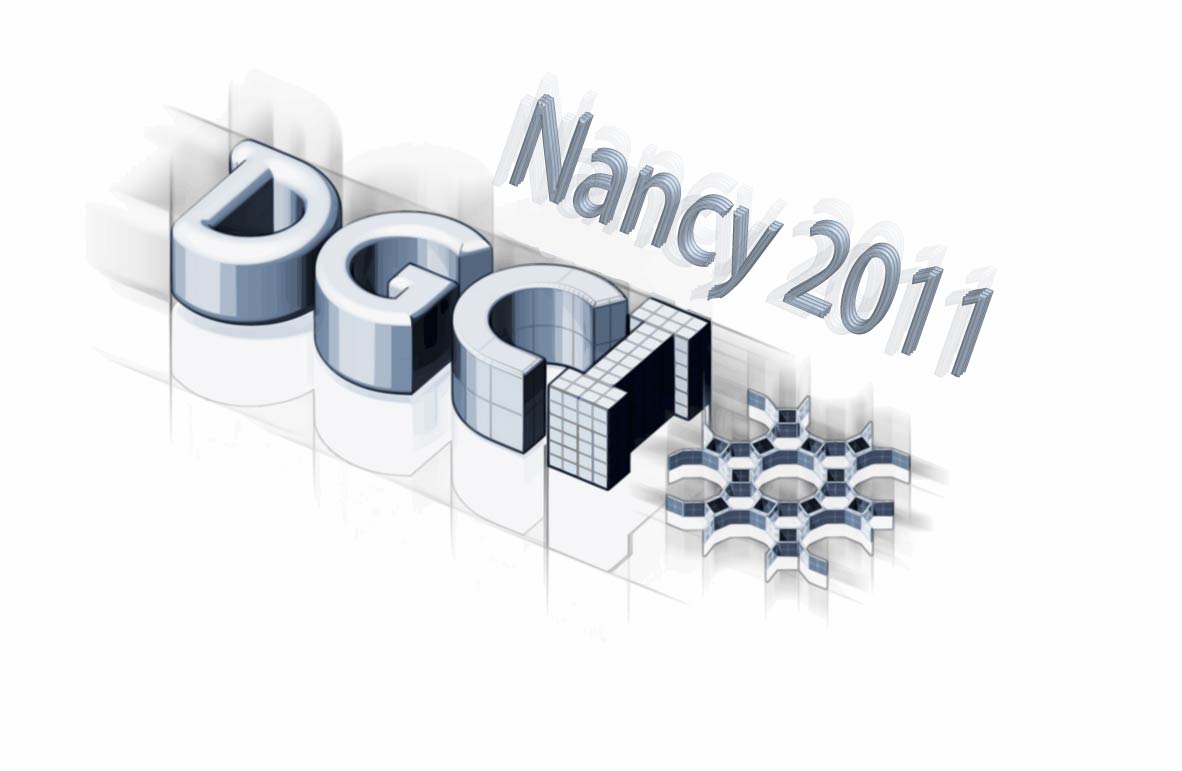16th IAPR International Conference on
Discrete Geometry
for Computer Imagery
6-8 April 2011 Nancy, France
It will be a pleasure to welcome in Nancy three invited speakers:
Agnes Desolneux, CNRS researcher: |
|
| MAP5, Paris Descartes University, France
Title: A probabilistic grouping principle to go from pixels to visual structures. Abstract: This talk will describe how the Helmholtz principle, which is a principle of visual perception, can be translated into a computational tool that can be used for many problems of detection of a given structure in a discrete image. The Helmholtz principle can be formulated two ways. The first way is common sensical. It simply states that we do not perceive any structure in a uniform random image. In this form, the principle was first stated by Attneave (1954). In its stronger form, of which we shall make great use, the Helmholtz principle states that whenever some large deviation from randomness occurs, a structure is perceived. In other words, ``we immediately perceive whatever has a low likelihood of resulting from accidental arrangement'' (stated in Vision by S.-C. Zhu or D. Lowe). To translate this principle into a computational tool, we will introduce a variable called NFA (Number of False Alarms) associated to any geometric event in an image. The NFA of an event is defined as the expectation of the number of occurrences of this event in a pure noise image of same size. Meaningful events will then be events with a very low NFA. We will see how this notion can be efficiently used in many detection problems (alignements, smooth curves, edges, etc.). The common framework of these detection problems is that they can all be translated into the question of knowing whether a given group of pixels is meaningful or not. This is a joint work with Lionel Moisan and Jean-Michel Morel. |
|
Jarek Rossignac, Professor: (IAPR Invited speaker) |
|
| GVU Center, Georgia Tech, USA Title: Ball-based shape processing Abstract: We discuss ball-based approaches for segmenting and for rounding digital models and also for measuring the discrepancy and for computing the correspondence and optimal morph between shapes. Papers describing these techniques may be found on http://www.gvu.gatech.edu/~jarek/papers.html. |
|
Jean Serra, Professor Emeritus: |
|
| ESIEE-LIGM, Paris, France Title: Hierarchical Segmentations Abstract: Most of the current segmentation techniques, in image processing, rest on hierarchies of transforms. The final segmentation borrows its classes from the various levels by minimizing energy, or by reference to a connective criterion. The efficiency of the approach depends on some conditions on the underlying energy, or connection. For example, when energy satisfies the condition of hierarchical increasingness, then the partitions of minimum energy can be characterized and computed easily. Moreover, these solutions form a complete lattice for the ordering of the partitions. Therefore, one can always take the (unique) largest solution, or act on the whole set of solutions according to some new criterion. A few examples illustrate these points.
On the other hand, these methods often generate small classes that still persist at the high levels of hierarchies. The usual ordering on partitions, namely that of refinement, is probably too severe. It can A new ordering, called building ordering, is proposed. It requires the datum
of a connection over the space E to segment, and states that
When it replaces the refinement ordering, it then becomes possible to share the small parasite classes between their neighbours, to create hierarchical semi-groups, and to combine partitions for obtaining median ones. |
